In the advertising world, getting people to do something is the top aim. Advertisers use different ways to make their target audience pay attention and then act. This could be buying something, trying a new service, or thinking in a certain way. The triad of ethos, pathos, and logos, first suggested by the Greek philosopher Aristotle, is a key method for doing this.
At its heart, ethos focuses on how much we trust the person or company behind the ad. To really get through to their audience, brands need to be seen as leaders and trusted sources. Using celebrity endorsements is a great way to boost this trust.
Key Takeaways
- Ethos, pathos, and logos form the rhetorical triangle for persuasion, as outlined by Aristotle.
- Ethos focuses on establishing credibility and trustworthiness through expertise and authority.
- Celebrity endorsements are a powerful tool for leveraging ethos in advertising campaigns.
- Pathos appeals to emotions, creating personal connections and evoking desires.
- Logos employs logical arguments, factual evidence, and reasoning to persuade audiences.
Understanding the Modes of Persuasion
In the art of persuasion, Aristotle noted three important ways to win over others. These are ethos, pathos, and logos. Each one helps speakers or advertisers to be seen as trustworthy, to connect emotionally, and to make sense.
Ethos: Building Credibility and Trust
Ethos is all about trust and credibility. This is the ethical appeal. To show they know what they’re talking about, people might point out their experience or show they’re respected. Businesses might also show off awards or endorsements. This helps people believe in them.
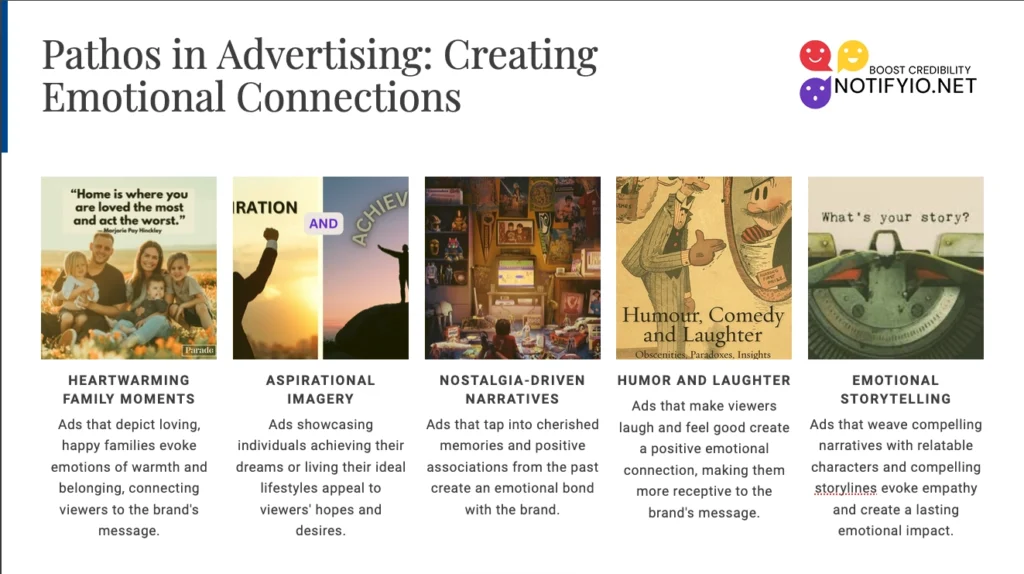
Pathos: Evoking Emotional Responses
Pathos aims for the heart. It’s the emotional appeal. Advertisers use stories and characters to make you feel something. They show pictures or tell tales that make you want something or remember something good. This makes you like what they’re selling.
Logos: Making Logical Arguments
Logos speaks to your mind. It’s all about logic. By using facts and good arguments, advertisers try to sound smart. They might compare different products to show why theirs is the best. This helps you figure out what to buy based on the facts.
Together, ethos, pathos, and logos are a big help in speaking to people. They form the rhetorical triangle. This triangle is great for making ads that make sense, feel right, and are interesting. Advertisers can use all three to make people want to buy or do something.
The Role of Celebrity Endorsements
In today’s advertising world, brands use a strong method to persuade people and seem trustworthy – celebrity endorsements. Joining hands with well-known endorsers, companies can use the fame of these celebrities. It helps them catch the audience’s eye and make a strong connection with their products.
Leveraging Star Power for Brand Recognition
Celebrity endorsements help brands quickly get seen and understood. When a favorite celebrity such as Kevin Hart tells about a product, their fans might get interested. This match lets brands share the spotlight and use of ethos of the celebrity. It makes their items seem more valuable and wanted.
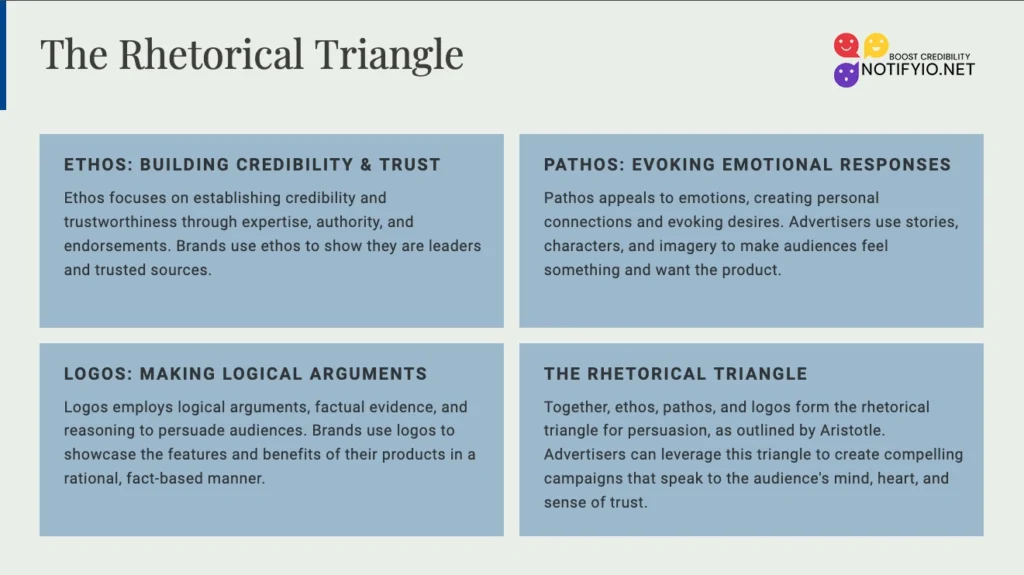
Establishing Credibility Through Association
Celebrity endorsements do more than just grab attention. They’re strong in making brands seem true and dependable. For example, when Michael Jordan praises Nike’s sports gear and shoes, his skills and success make the product feel real. Customers may trust the endorsed brand because of the celebrity’s known skill and success.
Brands team up with celebrities to shine a light on them and build trust. This helps them convince people to try what they’re selling.
Choosing the right celebrities helps brands connect with their customers in a deep way. This strategy not only makes brands more well-known but also builds trust and skill that can really sway consumer choices. It pushes them to check out the advertised products.
Ethos in Advertising: Establishing Credibility
In the world of ethos rhetoric, advertisers use their knowledge and credibility to make brands seem trustworthy. They show off awards or endorsements to prove they are the best. This makes customers believe the ad is honest and true.
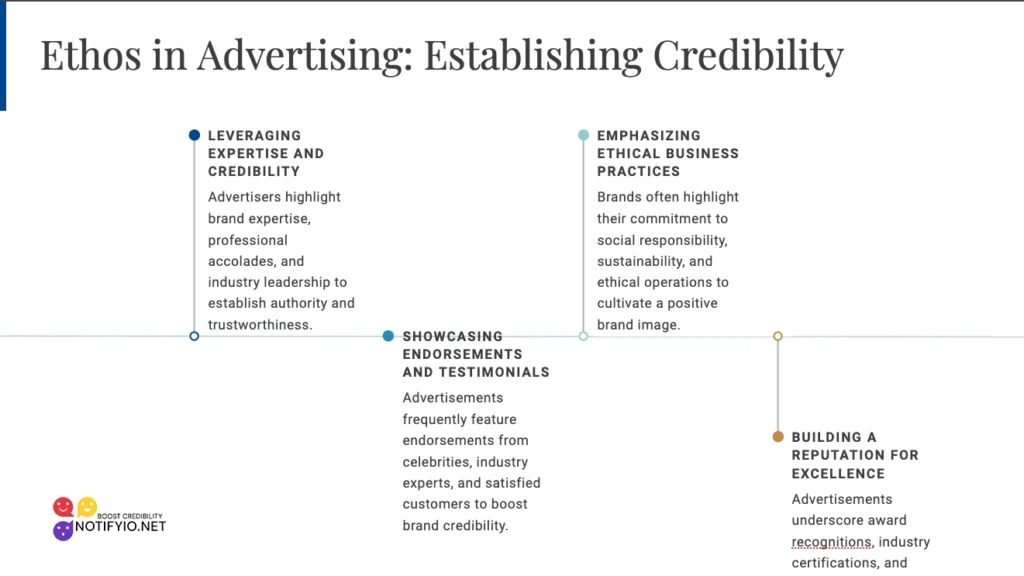
Leveraging Expertise and Authority
Ads often show how much a brand or product knows. Think of Apple. They talk about their cool technology to show they’re the leaders. A dentist might talk about their experience to win over new patients.
Building a Trustworthy Brand Image
Ads also want to seem honest and good. They talk about being fair and caring for the earth. This makes people think they’re good and trust them. For example, a sports clothes brand might talk about using green materials to win over people who care about the environment.
Big brands like Nike and small local shops both use ethos appeals. Whether they are telling stories or talking about helping the community, it builds trust with the people buying their products.

Pathos in Advertising: Creating Emotional Connections
In marketing, using pathos is key to making people feel connected. It lets advertisers tap into emotions like love and joy. This draws people in, making the ads more likely to affect them.
Evoking Desire and Aspiration
Ads often use pathos to spark desire. Nike, for example, shows athletes striving for success. This makes viewers want to buy Nike products, feeling they can also achieve big goals.
Tapping into Shared Values and Experiences
Celebrities endorse products to stir emotions, connecting with viewers on themes such as self-expression. By telling stories that pull at the heart, brands can build strong loyalty.
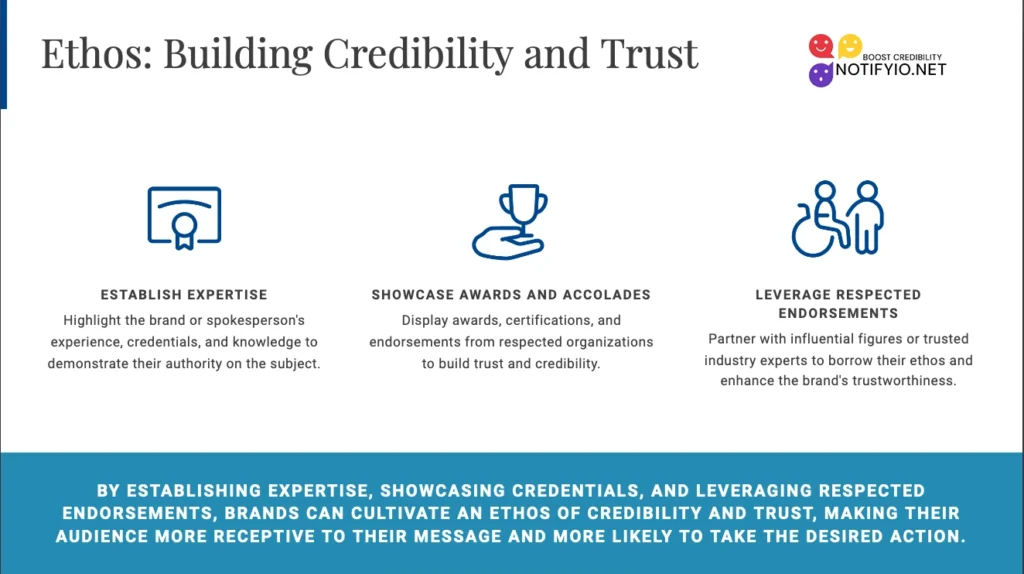
FAQ
What is ethos, pathos, and logos in advertising?
Ethos, pathos, and logos were defined by Aristotle. Ethos builds trust, pathos stirs feelings, and logos uses facts. These methods help make ads convincing.
How do celebrity endorsements leverage ethos?
Celebrity endorsements boost trust by linking a brand with someone well-known. This connects the brand with the expert’s good image. It helps the brand seem more trustworthy, getting more people interested in what’s being offered.
What are some examples of ethos appeals in advertising?
Ads can show a brand’s knowledge, titles, or praises from important groups. They might also focus on ethics, helping the community, and making customers happy. This makes the brand look more dependable.

How do advertisers use pathos to create emotional connections?
They use stories and emotions we all understand, like love and happiness. By using characters who are like us, they create a personal connection to the brand. This makes us want to get involved with the brand or buy what it’s selling, emotionally.
What is the role of logos in persuasive advertising?
Logos uses proof and good reasons. It shows facts, numbers, and solid arguments. This makes ads more believable and convincing in a smart way.
How do ethos, pathos, and logos work together in advertising?
The three, ethos, pathos, and logos, create strong ad campaigns. Ethos builds trust, pathos touches our hearts, and logos convinces us with facts. Together, these make ads that really speak to people, convincing them in various ways. This makes ads more powerful.
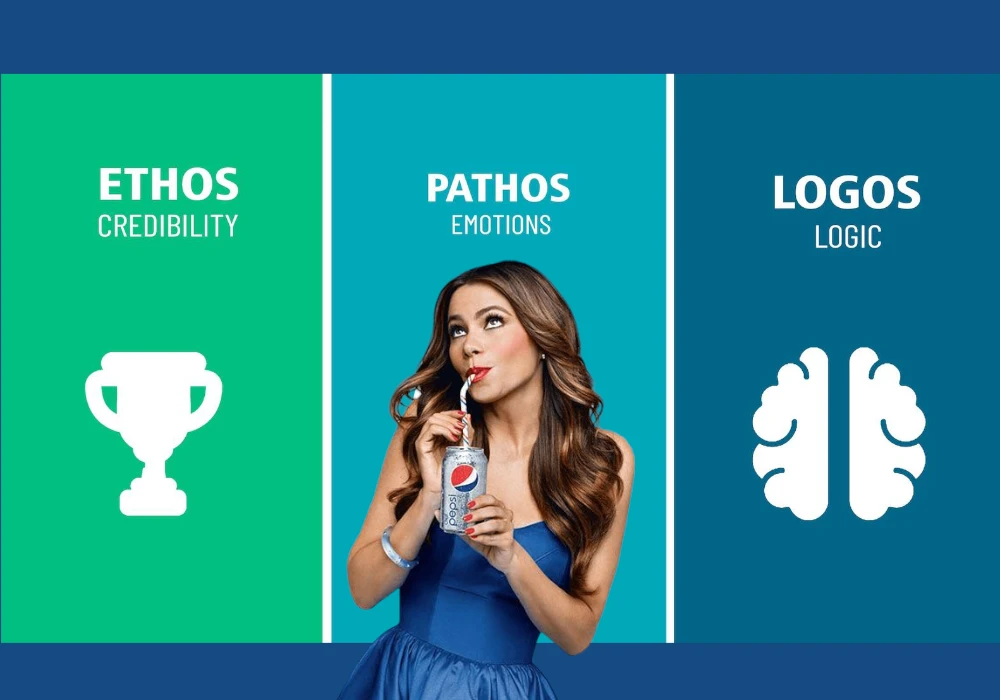



Leave a Reply